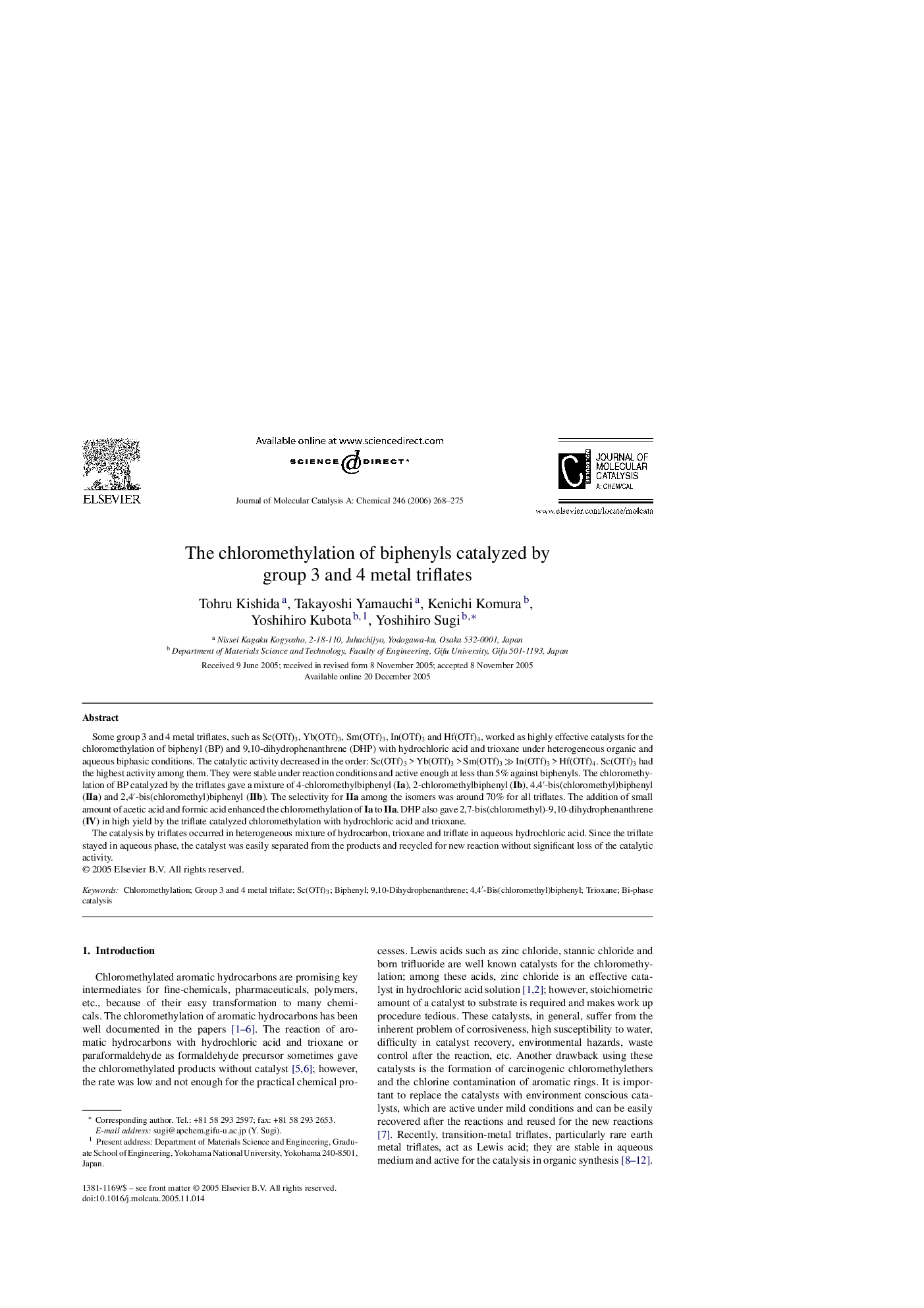| Article ID | Journal | Published Year | Pages | File Type |
|---|---|---|---|---|
| 69080 | Journal of Molecular Catalysis A: Chemical | 2006 | 8 Pages |
Some group 3 and 4 metal triflates, such as Sc(OTf)3, Yb(OTf)3, Sm(OTf)3, In(OTf)3 and Hf(OTf)4, worked as highly effective catalysts for the chloromethylation of biphenyl (BP) and 9,10-dihydrophenanthrene (DHP) with hydrochloric acid and trioxane under heterogeneous organic and aqueous biphasic conditions. The catalytic activity decreased in the order: Sc(OTf)3 > Yb(OTf)3 > Sm(OTf)3 ≫ In(OTf)3 > Hf(OTf)4. Sc(OTf)3 had the highest activity among them. They were stable under reaction conditions and active enough at less than 5% against biphenyls. The chloromethylation of BP catalyzed by the triflates gave a mixture of 4-chloromethylbiphenyl (Ia), 2-chloromethylbiphenyl (Ib), 4,4′-bis(chloromethyl)biphenyl (IIa) and 2,4′-bis(chloromethyl)biphenyl (IIb). The selectivity for IIa among the isomers was around 70% for all triflates. The addition of small amount of acetic acid and formic acid enhanced the chloromethylation of Ia to IIa. DHP also gave 2,7-bis(chloromethyl)-9,10-dihydrophenanthrene (IV) in high yield by the triflate catalyzed chloromethylation with hydrochloric acid and trioxane.The catalysis by triflates occurred in heterogeneous mixture of hydrocarbon, trioxane and triflate in aqueous hydrochloric acid. Since the triflate stayed in aqueous phase, the catalyst was easily separated from the products and recycled for new reaction without significant loss of the catalytic activity.
Graphical abstractGroup 3 and 4 metal triflates, such as Sc(OTf)3 are active for the chloromethylation of biphenyl in aqueous medium. The selectivity for 4,4′-bis(chloromethyl)biphenyl is ca. 70%. Figure optionsDownload full-size imageDownload as PowerPoint slide
